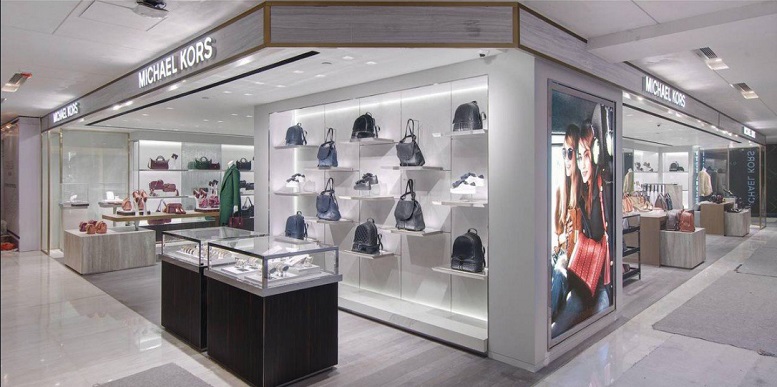At a time when retail is suffering, Michael Kors’ stock rose somewhat unexpectedly on Tuesday, August 8, following a strong earnings report for its fiscal first quarter. Although profit fell by 15% and revenue fell by 3.6% year-over-year, both quarterly profit and revenue beat average analyst expectations. Additionally, Michael Kors (NYSE:$KORS) also improved the company’s sales expectations. This suggests that perhaps the retailer’s turnaround plan is working.
“We are encouraged by our first quarter performance, although we continue to believe that fiscal 2018 will be a transition year for our company, as we focus on laying the foundation for the future by executing on our strategic plan,” Michael Kors’ CEO John Idol stated.
For its fiscal first quarter, Michael Kors’ net income was $125.5 million, or 80 cents per share. This includes the company’s acquisition of a Greater China licensee – excluding this cost, Michael Kors would have earned a net income of 90 cents per share. The average analysts’ expectation, according to Thomson Reuters, was 62 cents per share. Revenue was $952.4 million in Michael Kors’ fiscal first quarter, beating the average analysts’ expectations of $918.6 million according to Thomson Reuters.
“The numbers are something of a step forward,” GlobalData Retail’s managing director Neil Saunders noted. “While the numbers may strengthen [from here], the rest of this fiscal year will essentially be one of rebuilding and refining the brand, as well as closing further excess capacity and investing in channels and stores that have the best forward potential.”
The drop in revenue year-over-year was expected due to the fact that Michael Kors had been cutting stores that weren’t part of the company’s new business plan, Saunders said. “Reducing ubiquity comes with a price attached,” he explained.
Same-store sales went down by 5.9% this quarter, but still beat average analysts’ expectations of a 9% decrease, according to FactSet (NYSE:$FDS). “This trend of beating expectations is likely to continue as the top line appears on a path of improvement from here,” Randal Konik, an analyst at Jefferies, said. The turnaround is happening for Michael Kors, Konik noted.
Besides earnings that beat expectations, Michael Kors also revealed its plans to acquire Jimmy Choo (LON:$CHOO) for about $1.2 billion. It won’t be the company’s last acquisition, Idol told CNBC after the news was reported. Idol noted on Tuesday, August 8, that a more diverse portfolio will help expose the company to international markets.
Despite beating earnings expectations, however, Michael Kors is still struggling with slowing traffic to traditional department stores. As well, the company’s main handbag business has gone a bit stagnant thanks to competition and bigger discounts and promotions set out by competitors. Competition for Michael Kors only went up when competitor Coach (NYSE:$COH) bought Kate Spade for $2.4 billion.
However, once Jimmy Choo is acquired, Michael Kors expects a $275 million in the second half of fiscal 2018. By fiscal 2019, revenue should go up by $570 million to $580 million. Not including the Jimmy Choo deal, Michael Kors still raised its annual revenue expectations to around $4.28 billion.
“Management guided to both better top and bottom-line metrics for next quarter and the fiscal year, which is key as the market has been afraid of more guidance cuts. That’s simply not happening,” Konik said of the company’s confidence in the upcoming years.
As of Tuesday, August 8, at 1:18 PM EDT, Michael Kors’ stock has gone up by 22.37%. For the last year, as of Monday’s close (August 7) Michael Kors’ stock went down by 26%. So far this year, the company’s stock has gone down by almost 13%. As such, the company’s rise on August 8 was quite impressive.
Featured Image: twitter










